O que é Protótipagem Rápida a Laser?
A Protótipagem Rápida a Laser (LRP) está revolucionando a forma como as indústrias abordam a fabricação. Já se perguntou como podemos criar designs complexos em um piscar de olhos? Imagine uma tecnologia que transforma designs digitais em objetos tangíveis com precisão incomparável. Essa é a mágica da LRP. Neste artigo, vamos nos aprofundar nos prós e contras da prototipagem rápida a laser, desde seus pós de metal de ponta até sua ampla gama de aplicações.
Visão Geral da Protótipagem Rápida a Laser
A Protótipagem Rápida a Laser é uma tecnologia sofisticada que utiliza energia laser para criar objetos 3D camada por camada. Essa técnica, parte da categoria mais ampla de fabricação aditiva, é renomada por sua capacidade de produzir estruturas altamente detalhadas e complexas. Seja você

A Composição dos Materiais de Prototipagem Rápida a Laser
Quando se trata de LRP, a composição dos materiais utilizados é fundamental. Os pós metálicos são a estrela do show, cada um oferecendo propriedades únicas que os tornam adequados para diferentes aplicações. Mas o que exatamente são esses pós metálicos e como suas composições afetam o produto final?
Tipos e Características de Pós Metálicos para Prototipagem Rápida a Laser
Compreender os diferentes tipos de pós metálicos disponíveis para LRP é crucial. Abaixo está uma análise abrangente de modelos específicos de pó metálico, suas composições e características únicas.
| Pó metálico | Composição | Principais características | Formulários |
|---|---|---|---|
| Aço inoxidável 316L | Ferro (Fe), Cromo (Cr), Níquel (Ni), Molibdênio (Mo) | Alta resistência à corrosão, boa soldabilidade | Implantes médicos, equipamentos de processamento de alimentos |
| AlSi10Mg | Alumínio (Al), Silício (Si), Magnésio (Mg) | Leve e com alta condutividade térmica | Peças automotivas, componentes aeroespaciais |
| Inconel 718 | Níquel (Ni), Cromo (Cr), Ferro (Fe), Molibdênio (Mo) | Alta resistência, resistente à oxidação | Lâminas de turbina, motores de foguete |
| Titânio Ti6Al4V | Titânio (Ti), Alumínio (Al), Vanádio (V) | Alta relação resistência/peso, biocompatibilidade | Implantes médicos, componentes aeroespaciais |
| Cobalto Cromo (CoCrMo) | Cobalto (Co), Cromo (Cr), Molibdênio (Mo) | Alta resistência ao desgaste, resistente à corrosão | Implantes dentários, implantes ortopédicos |
| Aço Maraging (MS1) | Ferro (Fe), Níquel (Ni), Cobalto (Co), Molibdênio (Mo) | Alta resistência, tenacidade, fácil de usinar | Ferramentas, componentes aeroespaciais |
| Cobre (Cu) | Cobre (Cu) | Excelente condutividade térmica e elétrica | Trocadores de calor, componentes elétricos |
| Hastelloy X | Níquel (Ni), Cromo (Cr), Ferro (Fe), Molibdênio (Mo) | Resistência a altas temperaturas, resistência à oxidação | Motores de turbinas a gás, fornos industriais |
| Aço inoxidável 316L | Ferro (Fe), Cromo (Cr), Níquel (Ni), Molibdênio (Mo) | Alta resistência à corrosão, boa soldabilidade | Implantes médicos, equipamentos de processamento de alimentos |
| Inconel 625 | Níquel (Ni), Cromo (Cr), Molibdênio (Mo), Nióbio (Nb) | Excelente resistência à fadiga, alta resistência à tração | Processamento químico, aplicações marítimas |
| Alumínio AlSi10Mg | Alumínio (Al), Silício (Si), Magnésio (Mg) | Leve e com alta condutividade térmica | Peças automotivas, componentes aeroespaciais |
Vantagens de Protótipagem Rápida a Laser
Por que a Prototipagem Rápida a Laser está conquistando o mundo da manufatura? Vamos explorar algumas das vantagens de destaque que tornam essa tecnologia um divisor de águas.
Velocidade e Eficiência
Os métodos tradicionais de manufatura podem consumir muito tempo, especialmente ao produzir peças complexas. A Prototipagem Rápida a Laser, por outro lado, pode criar designs intrincados em uma fração do tempo. Imagine precisar de uma peça quase impossível de usinar. Com a LRP, você pode tê-la pronta em horas, em vez de semanas.
Precisão e exatidão
A Prototipagem Rápida a Laser se destaca na criação de componentes de alta precisão. A capacidade do laser de focar em pontos microscópicos permite detalhes extremamente finos. Isso é particularmente importante em indústrias onde mesmo o menor desvio pode ter consequências significativas, como na fabricação de dispositivos aeroespaciais ou médicos.
Versatilidade de materiais
De aço inoxidável a ligas exóticas, a gama de materiais que podem ser usados em LRP é vasta. Essa versatilidade significa que a tecnologia pode ser adaptada para uma ampla variedade de aplicações, seja na produção de componentes leves para a indústria automotiva ou implantes biocompatíveis para a saúde.
Custo-Efetivo para Designs Complexos
Para designs complexos ou personalizados, a manufatura tradicional pode ser proibitivamente cara devido às ferramentas necessárias. A LRP elimina a necessidade de ferramentas específicas, tornando-a uma opção mais econômica, especialmente para produção de baixo volume ou protótipos.
Redução de resíduos
Na manufatura subtrativa tradicional, uma quantidade significativa de material é desperdiçada, pois o excesso é cortado da matéria-prima. A LRP, sendo um processo aditivo, usa apenas o material necessário para criar a peça, reduzindo significativamente o desperdício e tornando-a uma opção mais sustentável.
Aplicações da Prototipagem Rápida a Laser
A versatilidade da Prototipagem Rápida a Laser se reflete em sua ampla gama de aplicações. Aqui está uma análise mais detalhada de como diferentes indústrias estão aproveitando essa tecnologia.
| Setor | Aplicativo | Benefícios |
|---|---|---|
| Aeroespacial | Lâminas de turbina, componentes estruturais | Peças leves e de alta resistência; tempo de entrega reduzido |
| Automotivo | Componentes de motor, peças personalizadas | Custo-efetivo para produção de baixo volume, desempenho aprimorado |
| Médico | Implantes, próteses | Personalização para pacientes individuais, biocompatibilidade |
| Eletrônicos de consumo | Componentes de carcaça, designs intrincados | Manufatura precisa, iteração rápida |
| Joias | Designs personalizados, padrões intrincados | Alta precisão, tempo de produção reduzido |
| Energia | Trocadores de calor, componentes de turbinas | Resistência a altas temperaturas, uso eficiente de materiais |
| Defesa | Componentes de armas, blindagem leve | Designs personalizados, prototipagem rápida para testes |
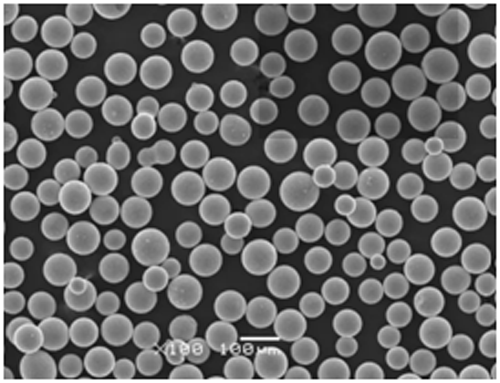

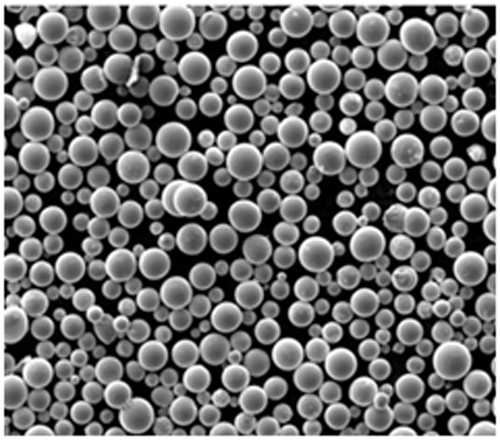
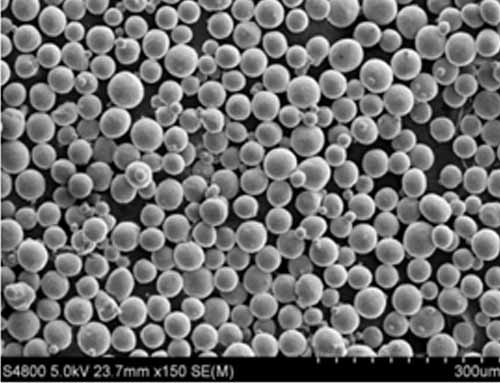
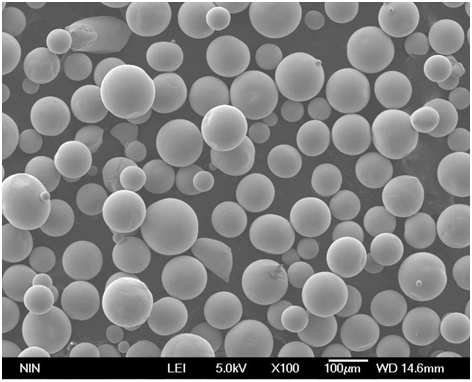
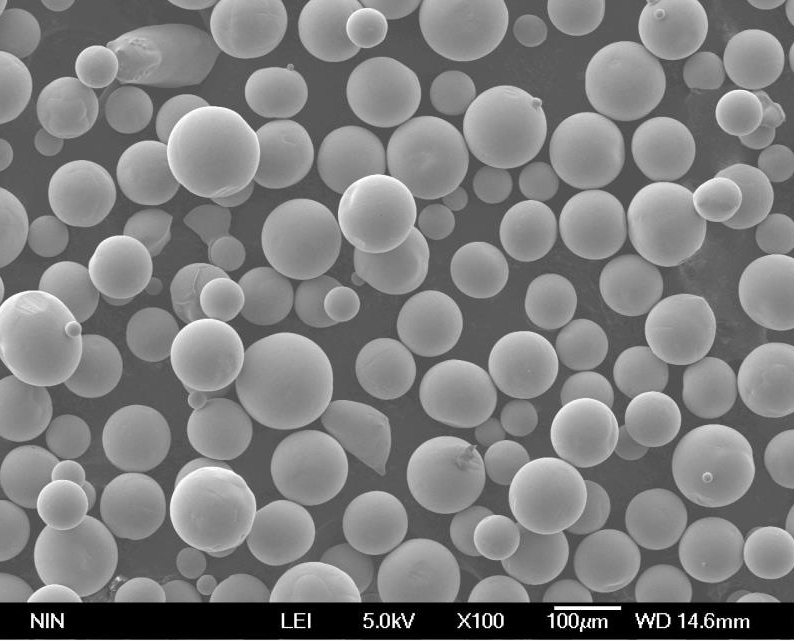
Especificações, Tamanhos, Classes e Padrões em Prototipagem Rápida a Laser
Compreender as especificações, tamanhos e classes dos materiais usados em LRP é essencial para selecionar os materiais certos para seu projeto. Abaixo está uma tabela detalhada que descreve alguns dos padrões e especificações mais comuns.
| Material | Padrão | Grau | Disponibilidade de Tamanho |
|---|---|---|---|
| Aço inoxidável 316L | ASTM F138, ISO 5832-1 | 1.4404 | Tamanhos de pó: 15-45 µm, 45-100 µm |
| AlSi10Mg | ISO 3522 | 3.2371 | Tamanhos de pó: 20-63 µm, 63-150 µm |
| Inconel 718 | AMS 5662, ASTM B637 | 2.4668 | Tamanhos de pó: 15-53 µm |
| Titânio Ti6Al4V | ASTM F1472, ISO 5832-3 | 3.7165 | Tamanhos de pó: 15-45 µm |
| Cobalto Cromo (CoCrMo) | ISO 5832-4, ASTM F1537 | 2.4778 | Tamanhos de pó: 10-45 µm |
| Aço Maraging (MS1) | AMS 6514 | 1.2709 | Tamanhos de pó: 15-45 µm |
| Cobre (Cu) | ASTM B170 | C10100 | Tamanhos de pó: 10-45 µm |
| Hastelloy X | AMS 5754, ASTM B435 | 2.4665 | Tamanhos de pó: 15-45 µm |
Fornecedores e detalhes de preços para Protótipagem Rápida a Laser Materiais
Escolher o fornecedor certo para seus materiais LRP é crucial para garantir a qualidade e a eficiência de custos. Abaixo, você encontrará uma lista de fornecedores de renome e uma visão geral dos detalhes de preços.
| Fornecedor | Material | Faixa de preço (por kg) | Localização | Prazo de entrega |
|---|---|---|---|---|
| Tecnologia Carpenter | Aço inoxidável 316L | $100 – $150 | EUA | 2 a 4 semanas |
| EOS GmbH | AlSi10Mg | $120 – $170 | Alemanha | 3-5 semanas |
| Höganäs AB | Inconel 718 | $250 – $300 | Suécia | 4-6 semanas |
| Arcam AB | Titânio Ti6Al4V | $300 – $400 | Suécia | 3-5 semanas |
| Sandvik | Cobalto Cromo (CoCrMo) | $200 – $250 | Suécia | 3-5 semanas |
| Aditivo GKN | Aço Maraging (MS1) | $180 – $220 | REINO UNIDO | 3-5 semanas |
| Tecnologia LPW | Cobre (Cu) | $90 – $120 | REINO UNIDO | 2 a 4 semanas |
| Kennametal | Hastelloy X | $270 – $320 | EUA | 4-6 semanas |
Comparação de Prós e Contras da Prototipagem Rápida a Laser
Nenhuma tecnologia é isenta de compensações. Vamos avaliar os prós e contras da Prototipagem Rápida a Laser para dar a você uma visão equilibrada do que esperar.
| Prós | Contras |
|---|---|
| Fabricação de precisão: A LRP oferece precisão incomparável, tornando-a ideal para designs intrincados. | Alto custo inicial: Os equipamentos e materiais podem ser caros, o que pode não ser viável para operações menores. |
| Velocidade: O processo é muito mais rápido do que os métodos tradicionais, especialmente para peças complexas. | Limitações materiais: Nem todos os materiais são adequados para LRP, e alguns podem exigir pós-processamento. |
| Versatilidade: Pode ser usado em vários setores e para uma variedade de aplicações. | Restrições de tamanho: O tamanho das peças que podem ser criadas é limitado pelo volume de construção da máquina. |
| Redução de resíduos: Como um processo aditivo, a LRP minimiza o desperdício de material, tornando-o mais sustentável. | Acabamento da superfície: Dependendo do material e do processo, as peças podem exigir acabamento adicional. |
Tendências Futuras em Prototipagem Rápida a Laser
Ao olharmos para o futuro, a Prototipagem Rápida a Laser está prestes a se tornar ainda mais integrante aos processos de manufatura. As tendências emergentes incluem o desenvolvimento de novos materiais, a integração com inteligência artificial para otimização de design e melhorias na velocidade e eficiência do processo. Além disso, à medida que os custos diminuem, podemos esperar que a LRP se torne acessível a empresas menores, expandindo ainda mais seu impacto.
![O que é Prototipagem Rápida a Laser? A Prototipagem Rápida a Laser (LRP) está revolucionando a forma como as indústrias abordam a manufatura. Já se perguntou como podemos criar designs complexos em velocidade recorde? Imagine uma tecnologia que transforma designs digitais em objetos tangíveis com precisão incomparável. Essa é a magia da LRP. Neste artigo, vamos nos aprofundar nos detalhes e […] prototipagem rápida a laser](https://am-material.com/wp-content/uploads/2024/03/metap-powder.png)
Perguntas frequentes
| Pergunta | Resposta |
|---|---|
| O que é Prototipagem Rápida a Laser? | A Prototipagem Rápida a Laser é uma técnica de manufatura aditiva que usa lasers para criar objetos 3D a partir de designs digitais, sobrepondo material. |
| Quais indústrias usam LRP? | A LRP é usada em vários setores, incluindo aeroespacial, automotivo, médico e eletrônicos de consumo. |
| Quais são as vantagens da LRP em relação à manufatura tradicional? | A LRP oferece tempos de produção mais rápidos, maior flexibilidade de design e menor desperdício de material em comparação com os métodos de manufatura tradicionais. |
| Quais materiais podem ser usados em LRP? | Uma ampla gama de materiais pode ser usada, incluindo aço inoxidável, ligas de alumínio, titânio e muito mais. |
| A LRP é adequada para produção em massa? | A LRP é normalmente mais adequada para prototipagem e produção de baixo volume, mas os avanços estão tornando-a cada vez mais viável para produção em massa. |
| Como a LRP se compara em custo? | Embora a LRP tenha um custo inicial mais alto, ela pode ser mais econômica para designs complexos ou pequenas tiragens de produção devido à eliminação dos custos de ferramentas. |
| Quais são as limitações da LRP? | As limitações incluem altos custos iniciais, restrições de materiais e limitações de tamanho das peças que podem ser produzidas. |
ConclusãoA LRP é mais do que apenas uma palavra da moda; é uma tecnologia transformadora que está remodelando as indústrias. Seja para criar peças altamente complexas, reduzir o desperdício ou simplesmente colocar um produto no mercado mais rapidamente, a LRP oferece uma série de benefícios difíceis de ignorar. À medida que a tecnologia continua a evoluir, suas aplicações só se expandirão, tornando-a uma ferramenta essencial para o futuro da manufatura.
Protótipagem Rápida a Laser Dominando a Prototipagem Rápida a Laser 1

